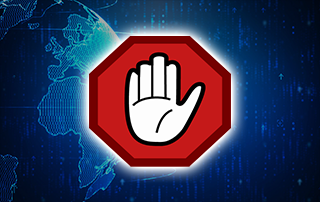
Creators are pressing the US Government to mull over impeding pirate websites as a “much-needed” solution.
Recommended IPTV Service Providers
The plea for site-blocking as an anti-piracy tactic is gaining momentum. Ruth Vitale, Chief Executive Officer of Creative Future, alongside the Association of American Publishers (AAP), is spearheading this effort, urging US lawmakers to contemplate this approach as a potential “game changer” in the battle against digital piracy.

The Backdrop
The shadow of the defeat of the Stop Online Piracy Act (SOPA) still looms over US politicians, rendering them wary of engaging in conversations about blocking websites.
The controversy surrounding SOPA shifted the attention of copyright holders to efforts in other nations to block sites, resulting in successful outcomes.

Over 40 countries, including neighboring Canada, have now put into effect measures to block sites. With this global momentum, the US may finally be open to reconsidering its stance on this contentious method.
The Pivot in Anti-Piracy Strategies
The US Government’s Patent and Trademark Office (USPTO) recently sought input to deliberate potential strategies against piracy and counterfeiting.
Among the various responses, site-blocking emerged as a recurring theme. While there is a provision for copyright holders to request injunctions to block sites, the unclear liability of ISPs under the law complicates this mechanism.
What copyright holders desire is a shift in the US legal framework to allow for “no fault” injunctions.
This entails that, with proper judicial oversight, courts should have the authority to direct Internet providers to block foreign pirate websites without holding these intermediaries liable.

The Menace of Piracy
For Creative Future, an organization that represents hundreds of companies and over 300,000 individuals from the creative industry, piracy is not just an obstacle—it is an existential threat.
Ruth Vitale emphatically points out that while the US is home to the largest number of pirates globally, it notably lacks effective tools to combat well-known pirate sites.
She laments the irony that while effective anti-piracy measures are being employed worldwide, the US is still falling behind.
Vitale emphasizes that court-ordered site-blocking injunctions have shown promise in countries like Canada and the UK.
If implemented properly, such measures can potentially redirect pirates towards legal subscriptions, resulting in a significant boost in revenue for the creative sector.
Rebutting The Concerns
While site-blocking has its advantages, concerns about overblocking and the subsequent threat to freedom of expression persist.
Although isolated incidents of overblocking have been recorded in other countries, Vitale argues that these “outdated arguments” should not discourage Congress from seriously considering site-blocking.
Publishers’ Perspective
The AAP is another strong proponent of site-blocking. They have put forward two primary legislative suggestions: a takedown-staydown policy that ensures once removed content remains down, and, crucially, site-blocking.
The AAP emphasizes that while site-blocking is not a panacea, it has proven to be an effective remedy in numerous jurisdictions worldwide.
Their stance is clear: if it works worldwide, it should work in the US as well.
Past Appeals and The Way Forward
This is not the first plea for site-blocking in the US. Although no concrete plans have materialized thus far, there is a noticeable shift in sentiment.
The public outreach by US Senator Thom Tillis to gather opinions on site-blocking received fervent support from entities like the Motion Picture Association. However, opposition is expected, as with any controversial topic.
Conclusion
The debate surrounding site blocking as an anti-piracy measure is heating up.
With international success stories as evidence, advocates like Creative Future and the AAP are pushing for its adoption in the US. While concerns about potential misuse persist, it is undeniable that this measure could pave the way for a stronger anti-piracy framework in the country.
As rightsholders rally for change, it remains to be seen how US legislators will respond.
For more information on this story, refer to the report on TorrentFreak and Creative Future’s response to the AAP (PDF).
